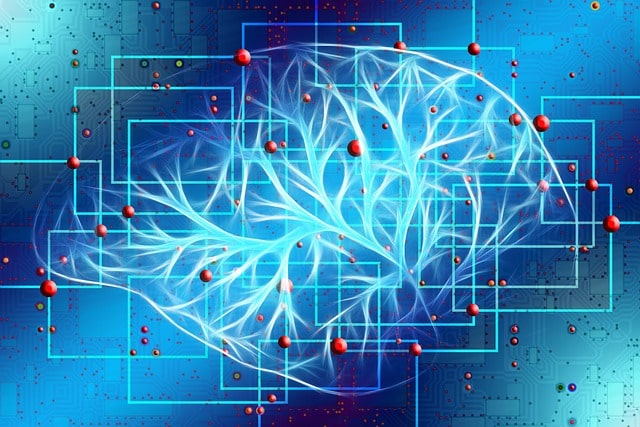Our brain comes with biases.
This can lead to a lot of stupid decisions.
If you don’t know how to navigate them, it will be a lot harder to become successful.
Here are 25 cognitive biases to account for.
Bias 1: Reward and Punishment Tendency
Everyone is motivated to do something if they can gain from it.
- Money
- Recognition
- A good feeling.
But everyone is also motivated to avoid doing something if there are punishments.
- Cancer
- Bankruptcy
- Embarrassment.
Bias 2: Liking and Loving Tendency (Halo Effect)
We ignore the faults and flaws of people or products if we like or love them.
Even if the mistake is unforgivable, it’s easier to accept it if it’s done by our favorite brand or an attractive person.
- Socially aware
- Likable
- And charismatic people
are forgiven more often and receive more favors.
This is also known as the “halo effect”.
Bias 3: Disliking and Hating Tendency
We ignore the virtues and positive aspects of people we dislike.
We just hate them.
- Socially clueless
- Annoying
- And value-sucking people
are hated more often.
Bias 4: Doubt and Avoidance Tendency
People hate uncertainty.
(Some more than others).
If we are unsure about a decision, we try to quickly remove any doubt by making a hasty decision so that we could be certain again.
Bias 5: Inconsistency and Avoidance Tendency
We are reluctant to change ourselves and our habits.
Our brain tries to conserve energy by being reluctant to change, which is a way of avoiding inconsistency.
Our sense of “consistency” is our center of gravity.
Bias 6: Curiosity Tendency
Curiosity is extremely powerful.
We want to know how the story ends.
And that’s why every episode of a TV series ends with you pulling your hair out.
You just can’t wait to see what happens next.
Bias 7: Kantian Fairness Tendency
It’s the Golden Rule.
Treat others like you would like to be treated.
You accept that life isn’t fair. Yet, you tolerate a little unfairness if it means greater fairness for all.
- i.e. letting in other drivers on the freeway knowing they will reciprocate in the future.
Bias 8: Envy and Jealousy Tendency
Envy and jealousy come from the primal need to get access to resources.
They are experienced when the object of desire is seen in possession of someone else.
“It is not greed that drives the world, but envy”– Warren Buffett
Bias 9: Reciprocation Tendency
We want to return the favor to someone who helps us.
So, next time you ask someone for a favor, know that they’re expecting you to reciprocate in the future.
Bias 10: Influence from Mere Association Tendency
We can be easily manipulated by association.
It can be:
- A group of people
- The quality of a product
- Advertising, etc.
That’s why brands use famous people to promote their products.
We instantly think that Nikes will turn us into legends just because Michael Jordan wore them.
Bias 11: Simple, Pain-Avoiding Psychological Denial
We have a habit of distorting the facts until they become tolerable to digest.
It’s easier to lie to yourself right now than it is to face change and uncertainty.
Most start changing their bad habits only when they have an emergency.
(And even then… many never change).
Bias 12: Excessive Self-Regard Tendency
This is also known as “Dunning-Kruger syndrome”.
We all think we’re above average.
- Smarter
- More attractive
- More persuasive than we really are.
This is where overconfidence comes from.
Bias 13: Over-Optimism Tendency
This bias shows that we tend to be more optimistic in any situation than we have reasons to be.
Bias 14: Deprival-Superreaction Tendency
This is loss aversion.
Loss hurts more than winning feels good.
You much rather prefer to avoid losing something than gaining something.
Bias 15: Social Proof Tendency
You look at other people:
- Their status
- Group-think
- Behavior
to think and act as they do.
You can take advantage of this bias by putting yourself around the group you want the results of.
Bias 16: Contrast-Misreaction Tendency
We misunderstand comparisons.
They often lead to poor decisions.
This is why you will always buy the item that’s on sale because you perceive it to be a bargain even if it isn’t.
We compare things to the most extreme anchor we have set for it.
It’s better to evaluate objects and people by themselves not by their contrasts.
Bias 17: Stress-Influence Tendency
We will act faster and get more extreme reactions if adrenaline is running through our body.
Some stress is good but too much of it will be bad.
Bias 18: Availability-Misweighing Tendency
We reach for what’s easily available.
Our brain starts working with what it has the easiest + most immediate access to.
To counter this bias, be sure to set your environment up for you to win.
- If you have no 9-5, you have no choice but to stack or starve.
- If you have no junk in your fridge, you have no choice but to eat healthy.
- If you have weights in your house and no TV, you have no choice but to workout.
When the only choice is the winning choice, victory is certain.
Bias 19: Use It Or Lose It Tendency
What you don’t use you lose.
You lose your skills if you don’t use them.
Bias 20: Drug-Misinfluence Tendency
You’re prone to do drugs and get addicted to them.
- Alcohol
- Caffeine
- Nicotine
- Cocaine
Or any other mind-altering substances included.
Bias 21: Senescence-Misinfluence Tendency
As we age there is a natural loss of certain skills and abilities.
You’re not as strong or mentally sharp as you used to be.
Continuous thinking, writing, and learning helps to slow the decay by promoting neuroplasticity.
Bias 22: Authority-Misinfluence Tendency
You tend to follow orders from higher authority figures just because they say so.
An example of this is the Milgram experiment.
The test subjects kept giving a guy electric shocks because the authority figure in the room said so.
These results show that a lot of people are willing to obey even if they’re causing serious injury and distress.
Bias 23: Twaddle Tendency
We have a tendency to waste too much time on things that don’t matter.
- Browsing social media
- Netflix
- Etc
Bias 24: Reason Respecting Tendency
Some people just want the answers, not the reasons or a better understanding.
This is why one of the most persuasive words is “BECAUSE”.
The reason itself doesn’t matter.
If you cut someone in line and tell them why, they will likely be ok with it.
Bias 25: Lollapalooza Tendency
The effect happens when multiple of these biases:
- Layer
- Interlock
- And interact with each other.
It’s easy to identify individual biases, but it’s harder to see how they combine.
This is how people get swept up into the madness of a crowd.
- Example: Being at an auction
Conclusion
These biases run human nature.
If you aren’t aware of them, you will have a very hard time becoming successful.
Now that you’ve read this article, there’s no excuse.
To learn more about using these biases to make money, click the button below.
You May Also Like:
10 Money Secrets Casinos Use To Profit Big
How to Deal With People 101: Don't Expect Others To Change
The Greatest Wealth Transfer in History Is Happening Now (And 99% Are Sleeping Through It)
How To Handle Negative People Without Losing Your Edge
See How Easily You Can Master the Art of Seduction
6 Ways To Be Respected Immediately
Social Reality Exposed: The Truth About Charisma and Attraction
Unlock the Ultimate Cheat Code: How Mastering Human Nature Gives You an Unfair Advantage in Life
My name is Mister Infinite. I've written 600+ articles for people who want more out of life. Within this website you will find the motivation and action steps to live a better lifestyle.


